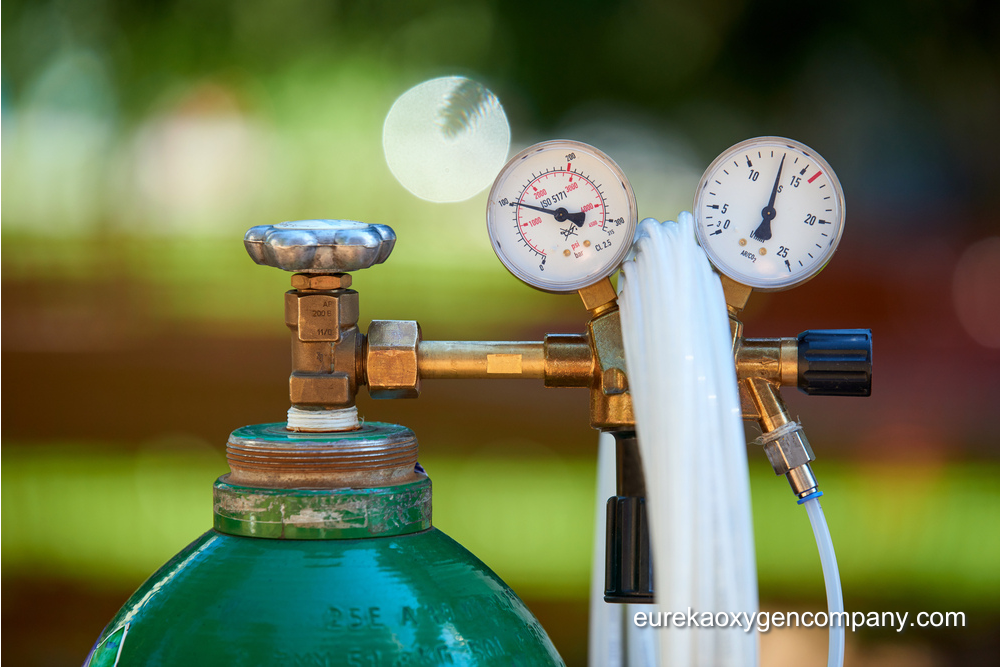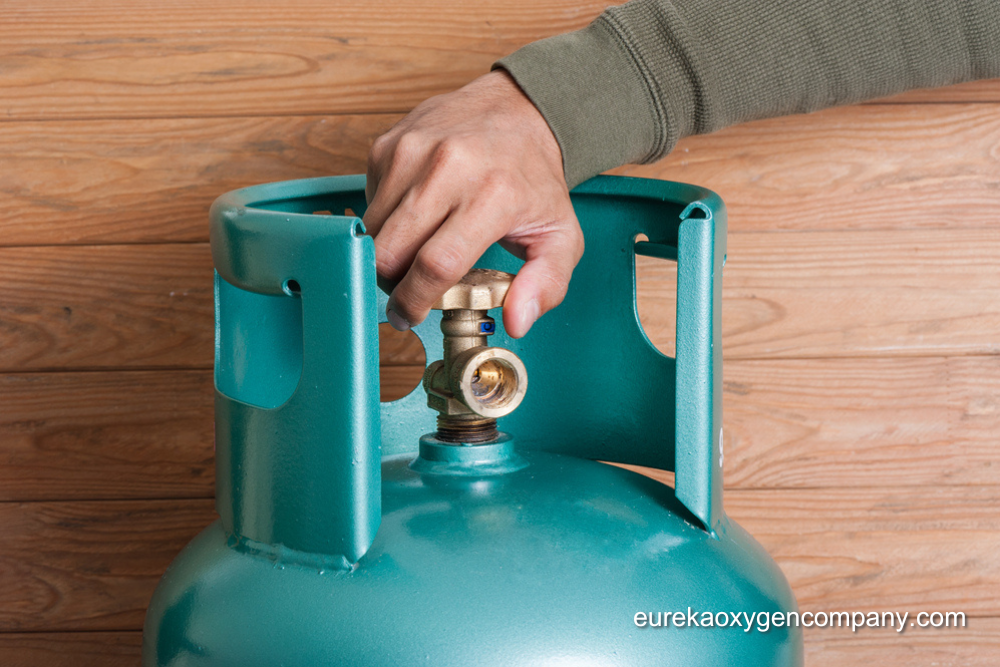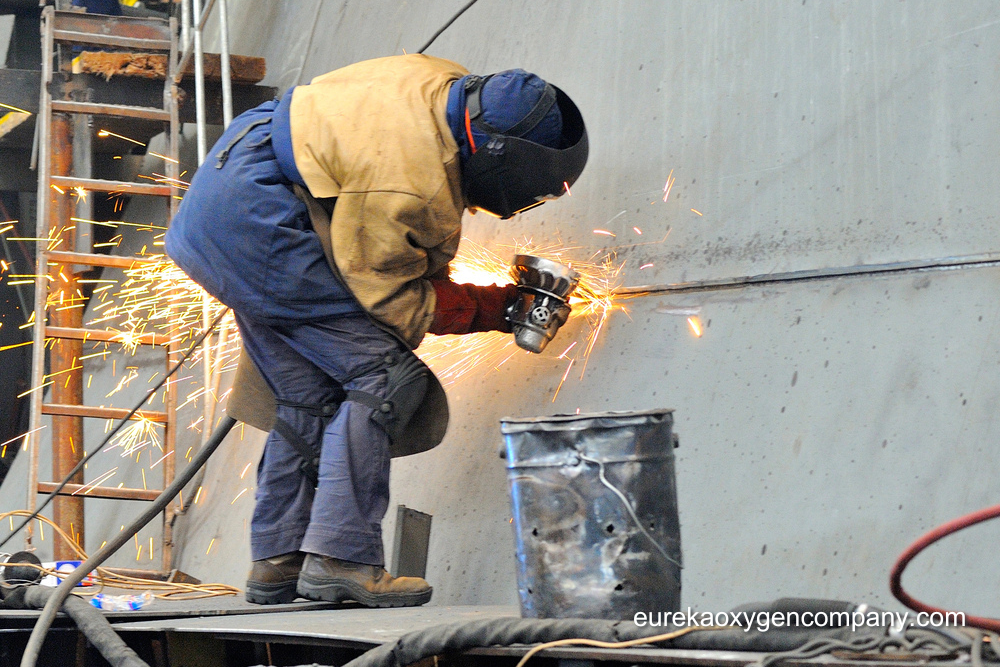How to fix common gas flow problems and when you should call a professional
Gas Delivery in Welding: A Simple Overview
The gas delivery system in welding has three main components, which are the regulator, some hoses, and a torch. Here’s a brief explanation of them:

- Regulator. The regulator is responsible for controlling the gas pressure and ensuring a steady and consistent flow.
- Hoses. The hoses connect the regulator to the torch and are responsible for transporting the gas.
- Torch. The torch is equipped with a nozzle and contact tip and is the final point of delivery, where the gas is mixed with the welding arc.
Inert gasses (which are also called shielding gases) help protect the welding from atmospheric contaminants and oxidation. Argon and helium are the main inert gases used in TIG welding and MIG welding.
As for active/reactive gasses, such as oxygen and carbon dioxide, they influence the penetration and overall characteristics of the weld. These are also commonly used in MIG welding, where the active gas enhances the welding properties.
Symptoms & Causes Of Gas Flow Issues
Common Symptoms of Gas Flow Issues
- Porosity. This occurs when small holes or cavities in the weld appear, caused by gas interruptions during the welding process.
- Inconsistent welds. You end up with variations in the weld quality and appearance due to irregular gas flow.
- Spatter. Unwanted splatters of molten metal on the work surface are a result of gas flow issues affecting the welding arc stability.
Specific Causes of Gas Flow Issues
- Leaks. Leaks disrupt the smooth flow of gas and can lead to poor weld quality. They can occur at hose connections, fittings, or even the regulator.
- Blockages. Obstructions in hoses or the torch can delay the gas flow, causing irregularities in the welding process.
- Faulty regulator. Regulators can malfunction and lead to fluctuations in gas pressure, affecting the weld quality.
- Incorrect settings. Improper regulator adjustments or incorrect gas combinations can result in bad welding outcomes
Troubleshooting Common Gas Flow Issues

Leak Detection
- Soapy water method: Apply soap water to hose connections, fittings, and the regulator to check for leaks. If bubbles appear, you’re dealing with a gas leak.
- Listening for hissing: Hissing can be another indicator of leaks, and to confirm this you simply need to listen for hissing sounds around connections. Try to do this in a quiet place, and if you hear something, it may be an indicator of escaping gas.
Inspecting and Replacing Hoses, Fittings, and O-rings
- Take your time to inspect hoses for early signs of wear, such as cracks, or another type of damage. If you find some that are not in the best shape, replace them.
- Make sure your fittings are properly tight and your O-rings don’t present signs of wear. If necessary, replace the O-rings to ensure you have a safe seal.
Verifying and Adjusting Regulator Settings
- Use a pressure gauge to verify that the regulator maintains the correct pressure.
- Adjust the regulator settings according to the welding requirements to ensure a stable and consistent gas flow.
Cleaning or Replacing Torch Components
- Inspect the torch nozzle and contact tip for blockages or excessive wear.
- Clean or replace components to maintain proper gas flow and welding arc stability. Torch maintenance is key.
When To Call A Professional
Most gas flow issues can be solved with the steps shared above, although, there are situations when seeking professional assistance is essential, such as:
- Persistent issues. If the troubleshooting steps don’t solve the problem, a professional welder should be consulted to identify hidden or complex issues.
- Complex repairs. Specific issues like internal regulator malfunctions, may require specialized tools and knowledge for repair.
- Safety concerns. If gas leaks persist or safety is compromised, a professional must be called to help and avoid potential hazards.
Safety Precautions in Welding: Essential Measures

Ensuring a safe welding environment is essential for your well-being and your workplace. Some key safety precautions to always have in mind when welding include:
- Use of protective gear. Welding helmet with auto-darkening lens, safety glasses or goggles, flame-resistant clothing such as long sleeves and pants, as well as heat-resistant gloves.
- Proper ventilation. Weld in a well-ventilated area to prevent fume and gas contamination. Use ventilation systems if you’re welding in a small place to prevent the accumulation of fumes and gasses.
- Fire safety. Always have a fire extinguisher within reach and keep all flammable materials away from the work area.
Final Words
There are multiple gas flow issues you can encounter when welding, and this post provides simple yet effective step-by-step solutions. If the issue persists or becomes a safety concern, don’t hesitate to call a professional.
Eureka Oxygen has a robust supply of fire suppression and a specialized team ready to help you. We deliver to various locations, such as the Counties of Marin, Napa, Sonoma, Lake, Mendocino, Humboldt, Trinity, and Del Norte. Contact us for more information on how we can help.

